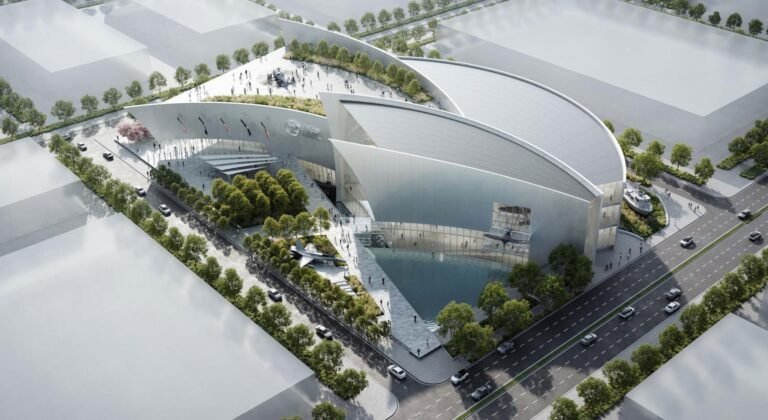who was ricardo bofill? designboom remembers his most iconic works
ricardo bofill, his legacy and his works
with the passing of iconic architect ricardo bofill (read more here), designboom celebrates his legacy with a collection of some of his most iconic and influential works. the catalan architect transformed the industry following a period of stark modernism, when designers were just beginning to reinvent the practice. with his use of vibrant color and bold geometries, bofill was commonly regarded as one of the most representative postmodernist architects in europe.
born in barcelona, the work of ricardo bofill (find his studio here) was heavily influenced by his heritage, especially with catalonia’s arab-mediterranean roots. his buildings, with their solid and clustered volumes, often recall the traditional kasbah — a high-walled, typically windowless fortress. he further developed this language with the design of a campus in morocco, during which he studied the logical architectural style of the moroccan cities and plazas. with works even across paris, bofill reinvented neoclassical motifs into postmodernist masterpieces. read on to discover some of ricardo bofill’s most important works.
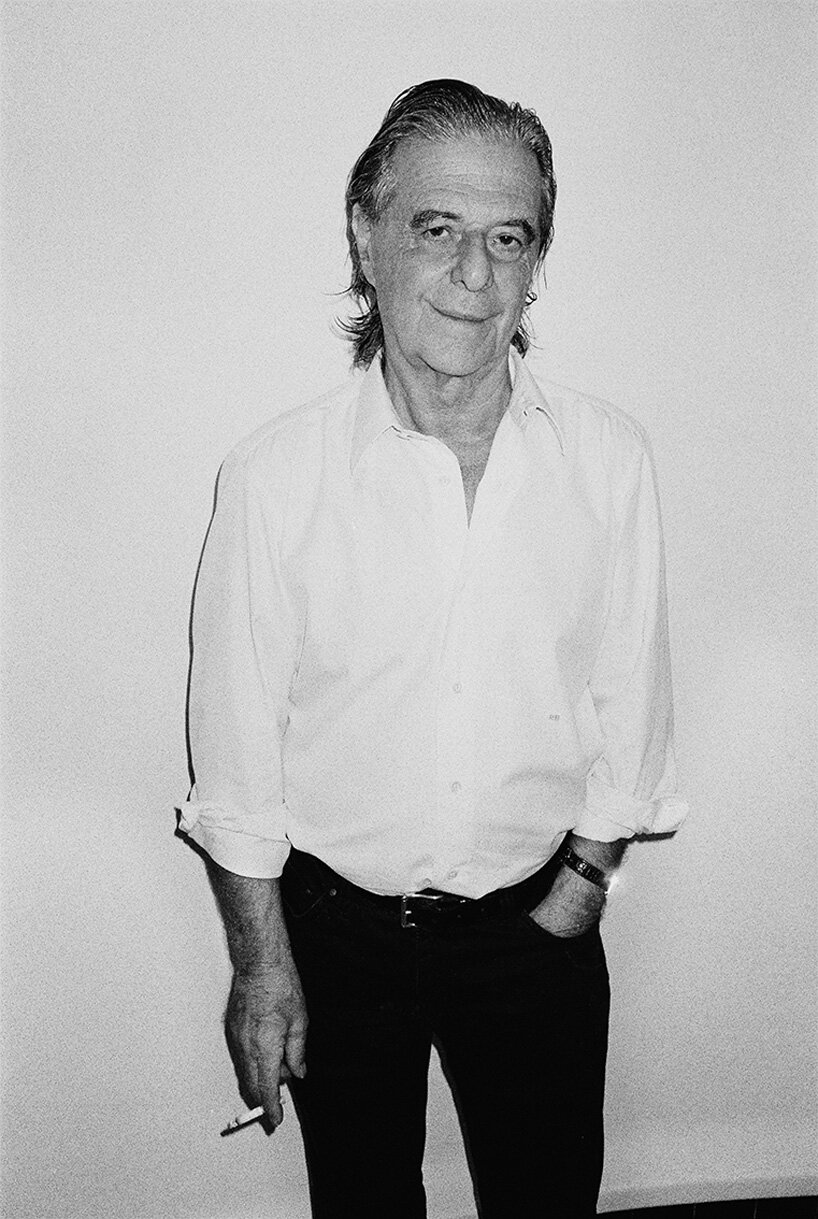
image © gregori civera / courtesy of ricardo bofill taller de arquitectura
kafka castle, catalonia
the surreal scale and clustered geometries defined ricardo bofill’s 1968-built ‘castillo kafka,’ or kafka castle. the apartment complex is located outside of barcelona in the region of sant pere de ribes. an homage to author franz kafka, the assemblage of prefabricated cubes was designed and sited entirely through a set of mathematical equations. this rule-based system generated the position of all ninety units, as well as the building’s position on the site. the first equation generated the number of room capsules that plug into the stair towers, while the second equation informed the height of each spiral progression around each tower.
with its volumetric overlapping and complex voids, the kafka castle was one of the early projects that propelled ricardo bofill and his studio onto the international stage.
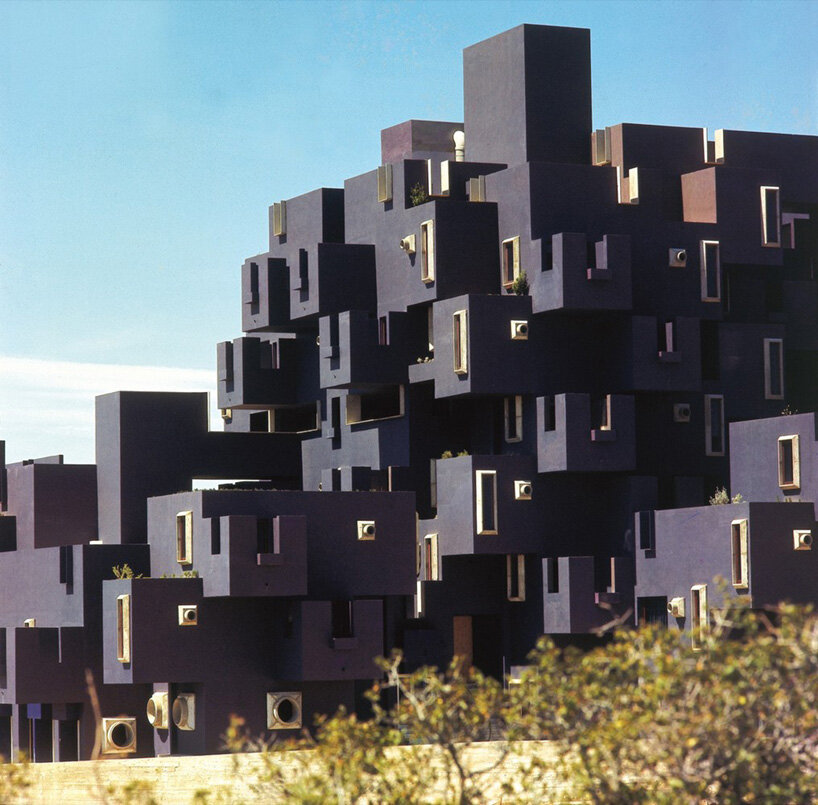 image © ricardo bofill taller de arquitectura
image © ricardo bofill taller de arquitectura
walden 7, catalonia
built in 1975, ricardo bofill’s ‘walden 7’ apartments represent the architect’s earliest ambitions to address the major problems of modern city life. the project takes shape as a cluster of fourteen units gathered around five garden courtyards — all topped by two swimming pools. almost all of the apartments looks outward onto the exterior and interior courtyards. a network of balconies and bridges create a complex spatial depth and variety of experiences.
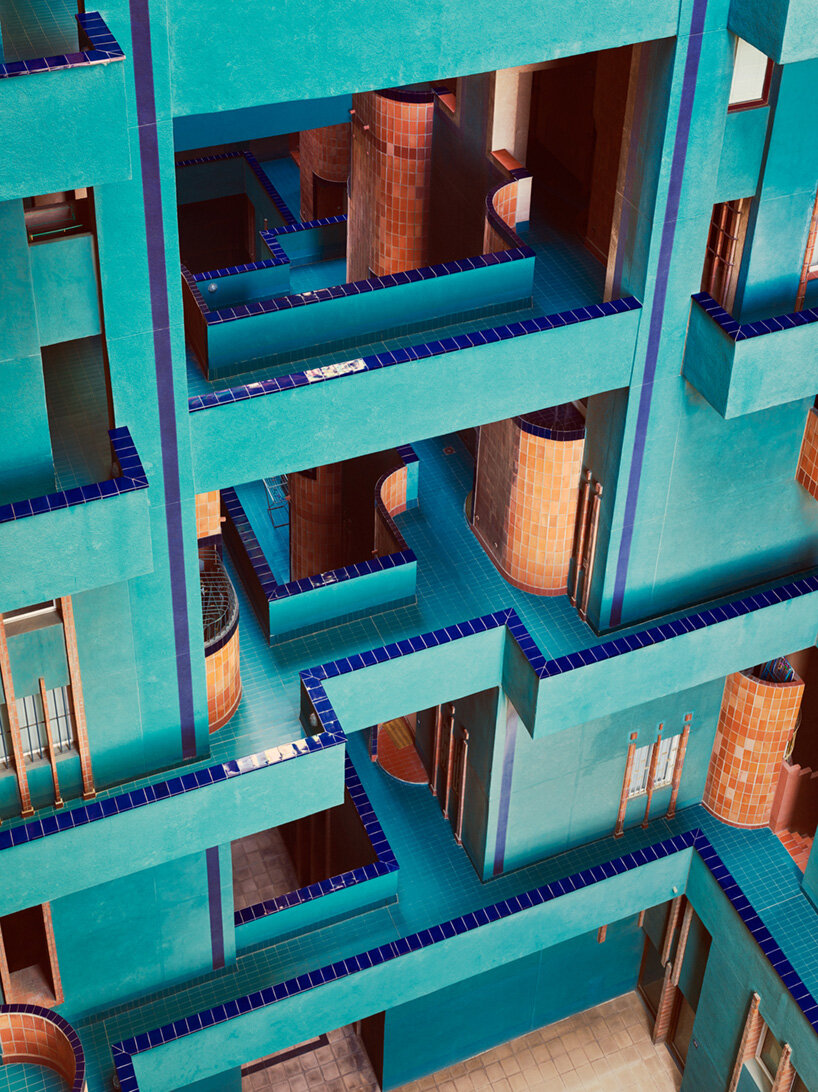
image © gregori civera / courtesy of ricardo bofill taller de arquitectura
la fabrica cement factory, barcelona
‘la fabrica’ is a 3,100 square-meter cement factory located near barcelona, spain, which serves as the unique backdrop to ricardo bofill‘s studio and home. the factory, which was first built in the post world war I era, is an architectural timeline of transformative vernacular having expanded through various styles as new functions called for an expanded program. the complex, providing a beautiful and varied series of spaces spanning from brutalist to surrealist with an industrial flavor, underwent a series of processes that converted the existing structure into a studio, gallery, garden, and home- a repurposed city within an abandoned factory slowly engulfed by vegetation.
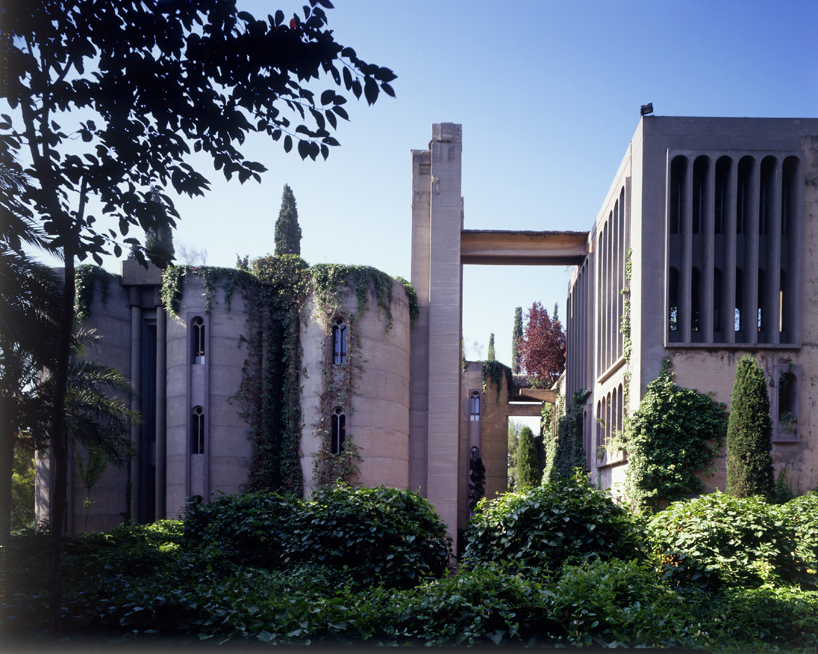
image courtesy of ricardo bofill taller de arquitectura | read more here
muralla roja, catalonia
completed in 1973, the muralla roja apartment complex — with its fortress-like façade and vertical silhouette that mimics the contours of the surrounding cliffs — is one of the finest examples of arab-mediterranean architecture. ricardo bofill sought to reinterpret the tradition of the kasbah — a high-walled, typically windowless fortress. the labyrinthine forms of the building evoke a striking constructivist aesthetic, with their ensemble of interconnected patios. each of these outdoor spaces provides access to the building’s 50 apartments, which include studios, as well as two and three-bedroom homes.
photographer andres gallardo once visited the site (see designboom’s coverage here), describing it as a ‘paradise for photographers,’ and commented: ‘the best thing about ‘muralla roja’ is that a photographer could visit it several times and keep taking totally different photos.’
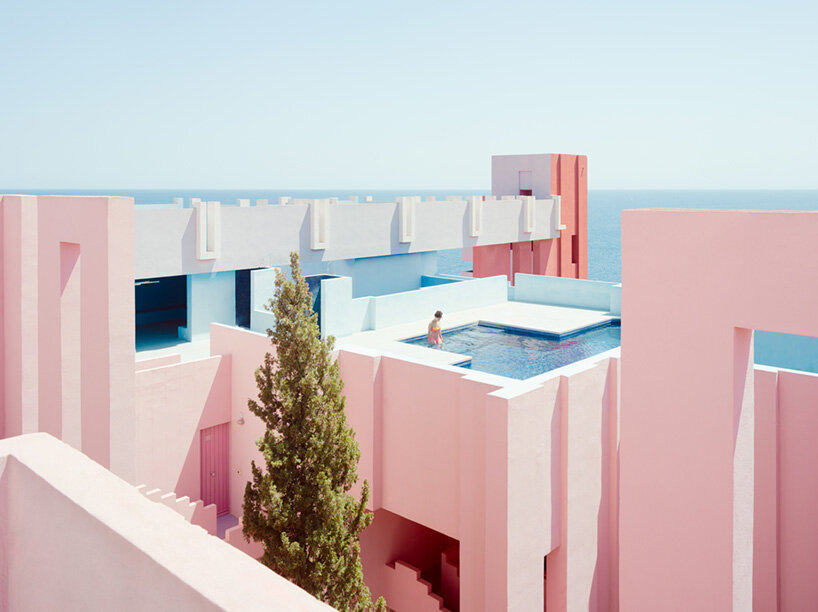
image © gregori civera / courtesy of ricardo bofill taller de arquitectura
université mohammed vi polytechnique, morocco
ricardo bofill taller de arquitectura was commissioned to design the campus for mohammed VI polytechnic university in 2016. the project is sited in benguerir, morocco, 50 miles north of marrakech. the masterplan is organized with a rational and geometric logic, defined by narrow streets, squares, and a central axis. the scheme integrates courtyards, gardens, and semi-covered streets which encourage interactions between students and teachers. this strategy promotes intellectual and social exchange, and strengthening the sense of community.
overall, the project takes influence from the urban design and the architectural style of the moroccan cities — namely the cities surrounding benguerir. ricardo bofill celebrates the rich architectural tradition of moroccan towns like fez, meknes, rabat, and marrakech, and the ksour (an arabic term for ‘castle’).
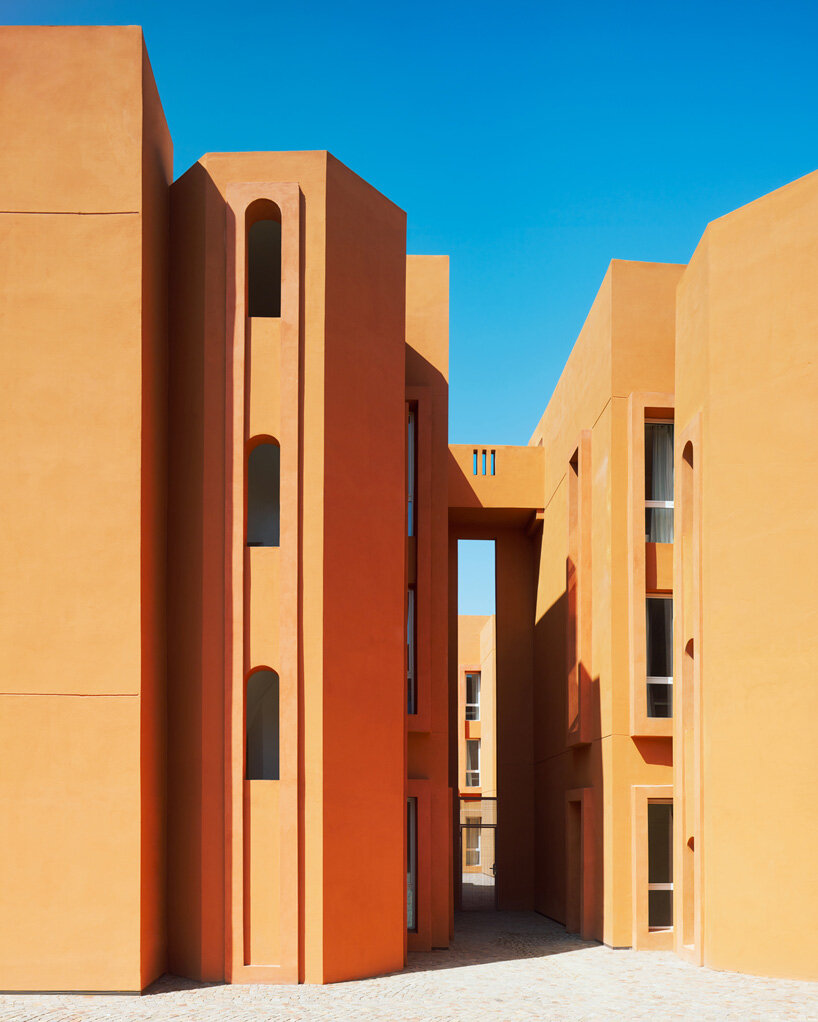
image © gregori civera / courtesy of ricardo bofill taller de arquitectura
xanadú, alicante, spain
built in 1971, the xanadú building is one of the first specific developments to come out of the taller’s research in the field of housing that aimed to establish a methodology by which to create geometric elements in space. this building of 18 apartments was a prototype experiment in applying a methodology to the studio’s theory of a garden city in space, and is expressed as one of many large, interconnecting elements.
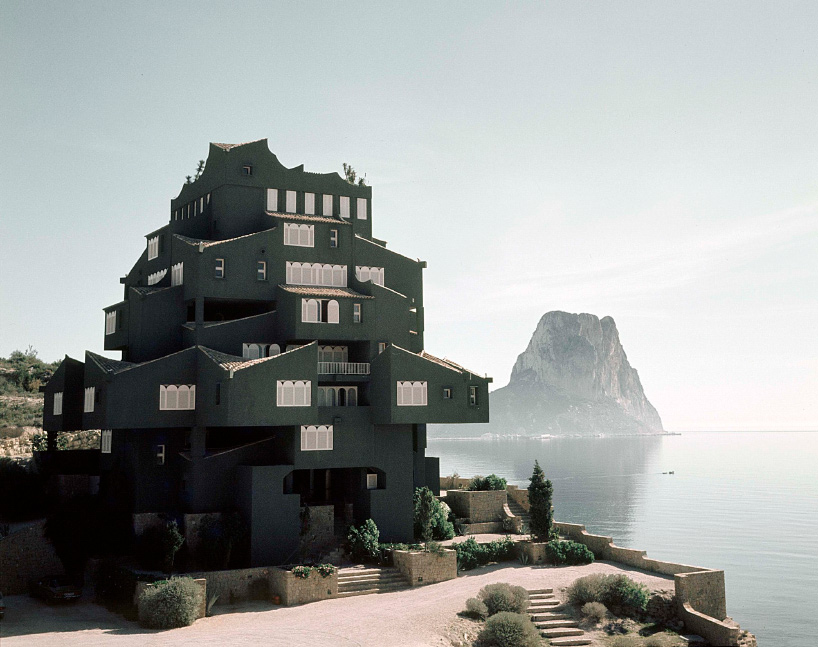
image © ricardo bofill taller de arquitectura
la piràmide, france
this 1976-built monument stands proudly along the catalan highway border between spain and france. the commissioned work began as a vague and ambitious idea, a challenge to break the monotonous and endless miles of tar and concrete which was the ‘autouroutes du sud-est’ highway, which was being constructed at the time. such a concept allowed ricardo bofill to experiment with form and landscape on a large scale, removed from an urban context.
the size and volume of the pyramid was informed by the amount of soil to be removed during the cutting of the highway, which was thus repurposed as infill. the project ultimately took shape as a monumental truncated pyramid with false perspectives and a classical french garden.
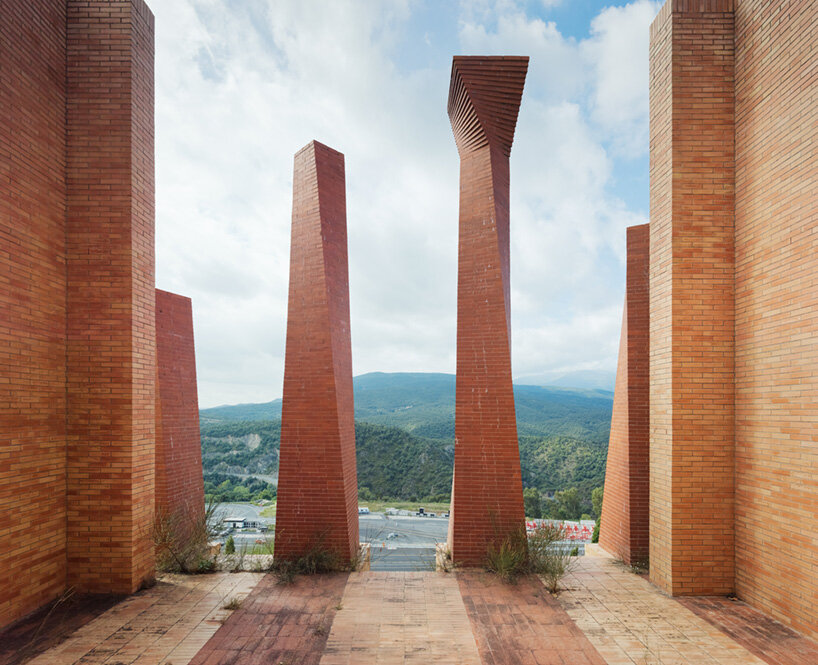
image © gregori civera / courtesy of ricardo bofill taller de arquitectura
axe majeur, paris
axe majeur, cuts across the parisian suburb of cergy-pontoise. the urban monument takes inspiration from the great urban boulevards of the city. it extends for more than three kilometers and ultimately opens onto a sweeping view of paris. the project was realized by a collaborative team of ricardo bofill and israeli artist dani karavan. construction of the massive complex took nearly thirty years, beginning in 1980.
the starting point of the axe is marked by the ‘place des colonnes hubert-renaud,’ with its central belvedere tower. this square is encircled by two semi-circular neoclassical residential buildings, designed by ricardo bofill as a continuation of his references to antiquity among his work.
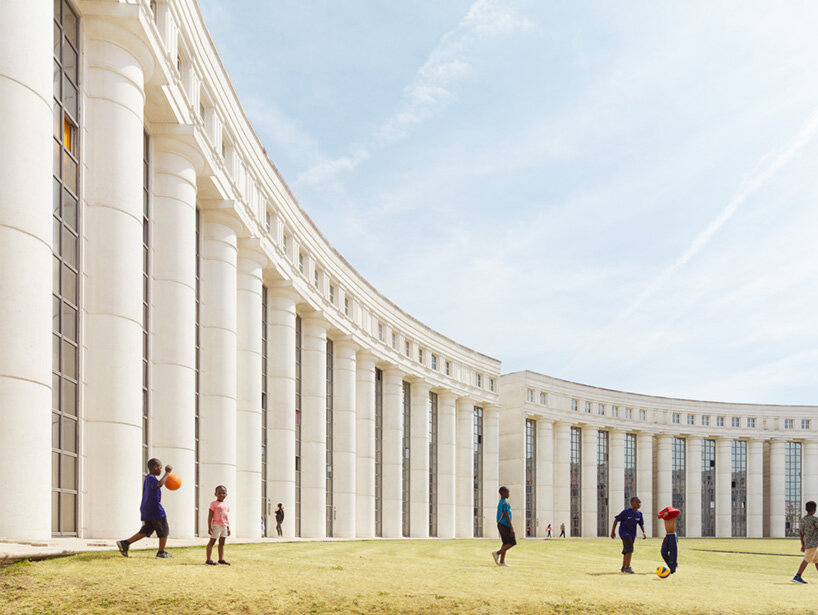
image © gregori civera / courtesy of ricardo bofill taller de arquitectura
place de catalogne, paris
located in the parisian neighborhood of montparnasse, the place de catalogne is named to honor the heritage of its architect, barcelona-born ricardo bofill. the social housing project was completed in 1985 as part of a larger urban planning initiative to construct new offices and apartments in the area. the project comprises two large buildings expressed with a neoclassical baroque language. an arcade of columns and pediments monumentally wrap the semi-circular plaza.
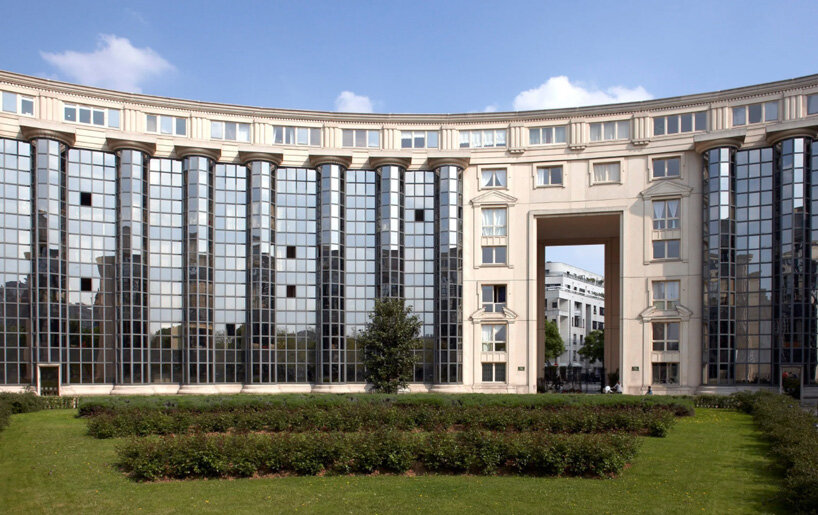
image © ricardo bofill taller de arquitectura


